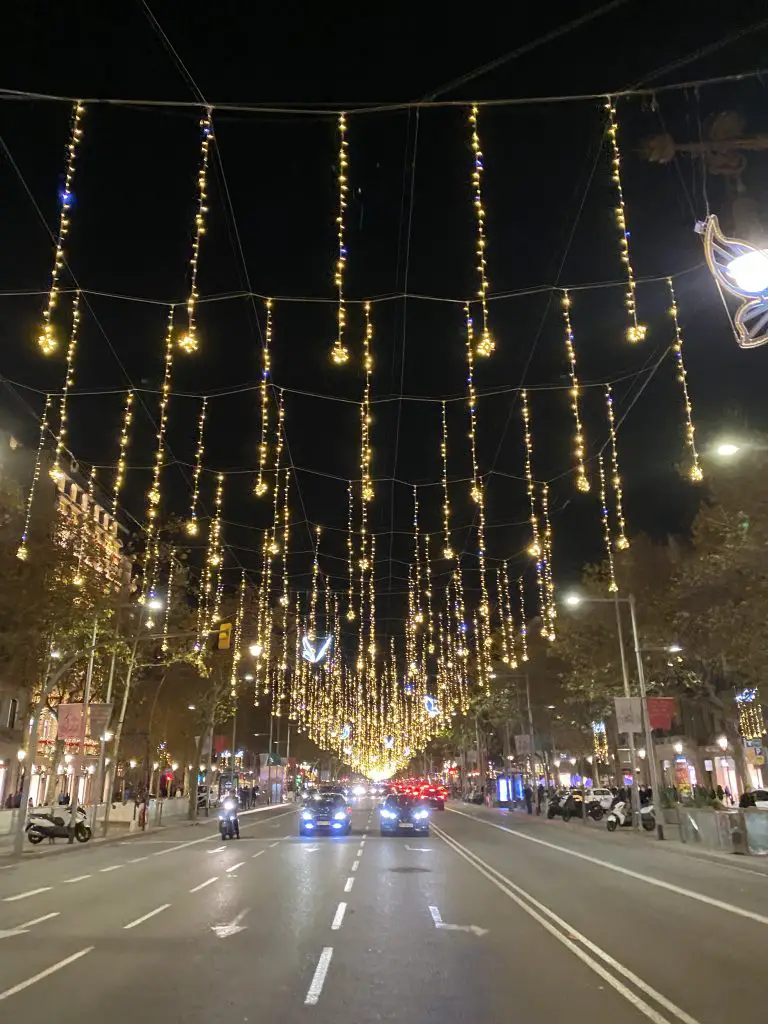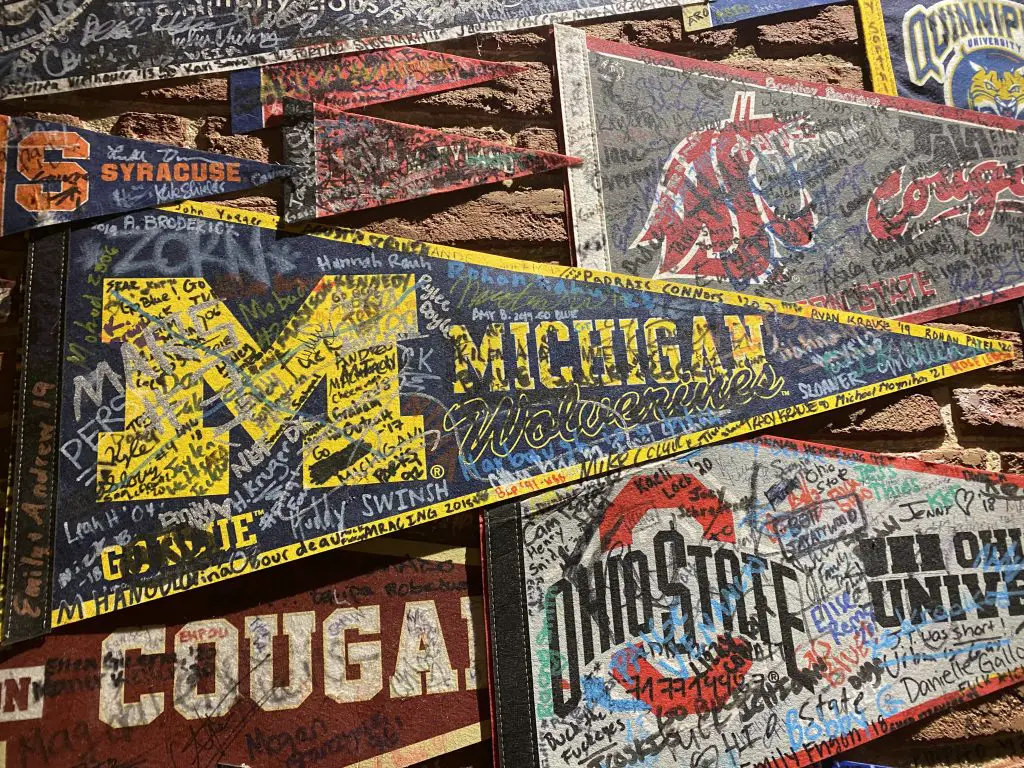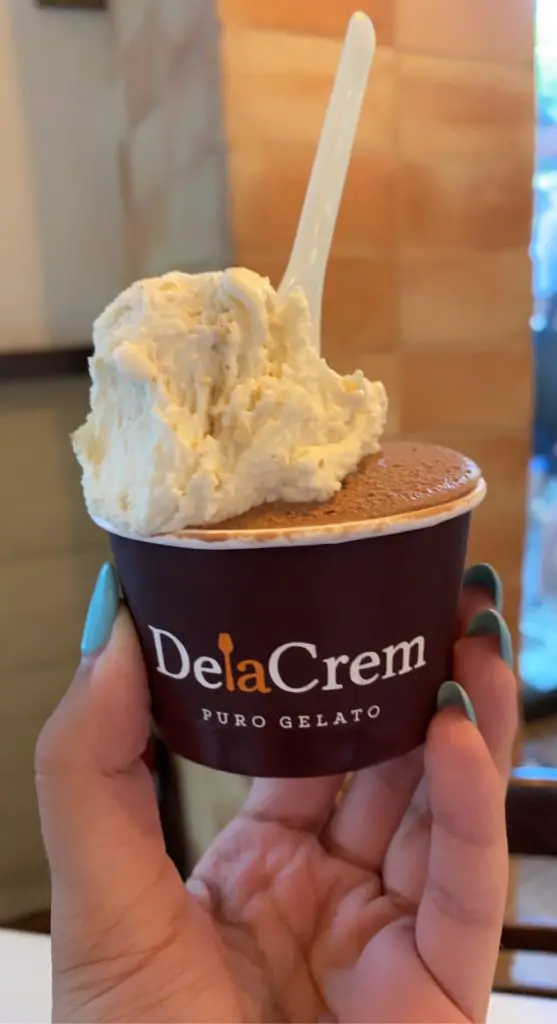Ahhh Barcelona – the beach, the architecture, the food! Having done my masters there, it’s safe to say I’ve experienced quite a lot of what my home away from home has to offer. From mainstream to quirky, I’ve pretty much done it all and can confidently recommend some of the coolest things in city. With that said, it won’t all fit into one post, so let’s to get started with answering our question:





Let’s Go Sports!
The biggest stadium in Europe (+ watch your favorites on vacation!)
The largest stadium in the world by capacity is a cricket stadium in India. Assuming you believe North Korea, the second largest is in Pyongyang. As a University of Michigan alumna, all I’ll say about the world’s third biggest stadium is GO BLUE! After The Big House, there’s a list of other American college football stadiums that round out the top 11. After that… Camp Nou, the legendary football, or rather soccer, stadium in Barcelona! FC Barcelona has a storied history in the sport and is famous for its passionate fanbase. While Lionel Messi may no longer play for FC Barcelona, it’s still worth checking out a game even if you’re not a big fútbol fan. The only downside to going to a game when you’re not super familiar with soccer is that there aren’t any announcers doing a blow-by-blow, so you don’t get any commentary on who’s involved in the match or what’s happening. Fortunately, most of soccer is pretty straightforward.
If you want, you can also visit the FC Barcelona Museum inside of Camp Nou and/or do a stadium tour. Unfortunately, it can somewhat expensive if you want to see everything (€28/person for just the museum, up to €149/person for more perks), so perhaps only go all out if you’re genuinely into soccer. Fortunately, my friends who are big European soccer fans assure me that the experience is very cool for people like them!
Shifting gears a bit, if you’re a big American sports fan like me and happen to be in Barcelona during football season, March Madness, or similar, head to the “American bar” Cocovail (my favorite bar). While they list what games they’re showing on their website, generally they’re also very accommodating and will turn one of their TVs to a different game of your choice if they can. Another great thing about Cocovail is when you make a reservation to watch a game you can put something like “College football” in the comments and they’ll put you at one of their tables with other football fans!
Pro Trip: If soccer isn’t your thing, look into attending a Barcelona basketball game! Tickets can be as little as 12 euro and everyone I’ve known who’s watched a game has enjoyed it.
Pro Trip: You can try walking in, you should really make a reservation to watch big sports games at Cocovail as they’re pretty much the only place that actively advertises things like “College football in Barcelona” and “March Madness in Barcelona”. They also show soccer, too, if you were wondering where to watch FC Barcelona!






Some Really “Gaudí” Architecture
mad genius or genius madman?
The architect Gaudí is to Barcelona as fish are to the ocean: a key feature. His art is everywhere, from the famous Sagrada Familia church to the sculptures around Park Güell. With that said, if you’re anything like me your first reaction to his works is that they’re absolutely crazy. Why are there fruit baskets on a church? Why does La Pedrera look so wavy? Are those carnival masks on Casa Batlló? After learning more, I gotta say that there’s a fine line between a mad genius and just being mad but Gaudí is definitely the former. While his art may look chaotic, it’s actually a carefully balanced dance of form and function that’s often inspired by natural phenomena.
With so much Gaudí to see in the city, which attractions are the best to see is the real question. In my opinion, two of his works are absolutely must-sees: Casa Batlló and La Sagrada Familia, in that order.
When visiting Casa Batlló, you can buy a ticket that includes an augmented reality experience that I think really adds something. Through an iPad’s camera, you get wonderful visuals of how various oceanic elements inspired different pieces of the house, as well as a glimpse into what the place looked like when it was the Batlló family’s residence; it’s the perfect way to see how Gaudí blended form, function, and nature in his works! One of my personal favorite elements of the house is the air vents inspired by fish gills, though the roof inspired by the story of the Catalonian patron saint, Sant Jordi (St. George), defeating a dragon is also very cool. I’m going to make a lot of people angry by suggesting I think that visiting Casa Batlló is a better Gaudí attraction to visit than La Sagrada Familia in Barcelona, but I stand by it — especially if you do a “Magic Nights” concert like I recommend in my pro tips below!
Speaking of La Sagrada Familia, the church is massive and full of so much imagery that booking a guided tour is almost crucial to help decipher it — don’t just walk around on your own! Notably, the completed Nativity Façade on the outside of the church and the beautiful colors that reflect inside from the stained glass are absolutely breathtaking. On a more subtle note, it’s amazing how Gaudí was able to mess with the concavity of some of his windows to allow for natural light to enter the crypt. While not all of La Sagrada Familia (or, “The Holy Family”) is finished yet, you can also see displays inside of it that show many of the scale models Gaudí built to help both himself and whoever would continue the project after his death.
In terms of the other two big Gaudí attractions people always talk about… Park Güell, if it fits into your schedule and the weather is nice you certainly get a nice view. But it is a little out of the way, and if you have to prioritize Gaudí attractions I must admit it doesn’t make my top two. I feel similarly about La Pedrera in the sense that it’s a fun add if you have free time, but it isn’t as magical as Casa Batlló or La Sagrada Familia.
Pro Tip: At Casa Batlló you can book a Magic Nights ticket, which includes an after hours tour of Casa Batlló followed by a glass of cava and a concert on the roof under the stars. The entertainers are wonderful and highly engaging to the audience – I even got pulled up on stage to sing with my performer!
Pro Tip: While you can’t wander, you are able to enter La Sagrada Familia to attend mass for free on Sundays.






Tap-Tap-Tapas!
Your guide to tapas
If you’re looking for a place with a very “Barcelona vacation” vibe to eat some solid tapas, I recommend going to Plaça Reial off of one of everyone’s favorite streets of Barcelona, La Rambla. In the plaza you can find a pair of elaborate lamp posts designed by Gaudí, a beautiful fountain, a series of restaurants, and often street performers! I personally almost always went to Plaça Reial when I wanted to relax and decompress with a sangria and some patatas bravas, especially since there’s ample outdoor seating options. Plus, it’s near the water and other cool Barcelona attractions! Another place I can recommend for tapas is Cerveseria Catalana off of Passeig de Gràcia, one of the other most central pathways in Barcelona, as it’s a little fancier.
Full disclosure though, I think most tapas places in Barcelona are more-or-less interchangeable. One might have a slightly better tortilla Española and another might have slightly better roasted padrón peppers for example, but since tapas are generally very simple dishes it’s usually not a huge difference.
In terms of which tapas to try, I certainly have feelings to share! First, my true love and the primary reason I’m sad I don’t live in Spain anymore: Patatas bravas! Functionally, patatas bravas are just some form of crispy potatoes with a semi-spicy sauce and a creamy garlicy sauce (sometimes mixed together). They are absolutely delicious and I would eat 10lb of them in one sitting if I could. You also have to try the pan con tomate just because it’s everywhere and super popular, though I personally can’t stand the stuff; it’s basically just raw tomato squished onto untoasted bread. Two other great things to try are garlic shrimp and Jamón Ibérico — a high quality type of ham from the Iberian peninsula that is very expensive to get in places like the US!
Pro Tip: As far as safety in Barcelona, you will almost certainly be fine. Your things however need an eye kept on them, as there are lots of pickpockets. This is especially true around La Rambla, the Raval neighborhood, and the El Born neighborhood. Keep your phone in your front pocket instead of the back, don’t leave your items unattended or left out, and zip whatever you can (pockets, purses, etc).
Pro Tip: Some of the best gelato you’re going to get in Europe is at De La Crem. Just go, even if there’s a line. Trust me here.
Pro Tip: While it isn’t strictly tapas, another way you can sample a number of local food items is by going to La Boqueria off of La Rambla, a huge public food market with both prepared and fresh foods available!





Take Me to Church
Mysterious Montserrat
On most half- or full-day guided trips involving the Montserrat, you’ll end up with a chunk of time to explore. Usually, you’ll have some version of the following options: Explore the monastery, listen to the Montserrat Boys Choir, hike some trails, shop, and/or visit the local vendors with stands lining one of the streets! Tragically, if you’re visiting with a tour and not on your own you won’t really have time for everything, so here’s my recommendations.
First, you should definitely check out the chapel, the area with the fertility fountain and candles, and if you feel like it the famous “Black Virgin” of Montserrat. I personally don’t think seeing the Black Madona up close and in-person is particularly necessary, but if it’s something you’re interested in you NEED to buy tickets in advance of your trip.
If you happen to be on the mountain when the Montserrat Boys Choir, one of the oldest and most famous of its kind in Europe, will be performing, watching them can definitely be a great choice if you’re a music lover. To be in the chapel and not in the courtyard watching/listening you’ll need to get to the performance early and likely use up a big chunk of our time at Montserrat, but (no pun intended) they do sound heavenly. Even if you’re not in the chapel or courtyard though, you may hear some of their performance as it can echo around the monastery area!
Next, my personal highlight from every time I’ve gone to Montserrat… THE STREET VENDORS! There’s a line of local vendors with tables that sell assorted goodies, heavily including but not solely limited to cheese and honey. All the vendors give out plenty of samples, so go crazy asking to try things! You can easily spend five minutes or thirty doing this.
Since it’s a short stop, I also recommend going into the main Montserrat store to buy some traditional Catalonian coca bread. It’s a super long, flat bread covered in sugar — delicious! While you’re there, for just a few euros you can also sample multiple local liquors, including one made exclusively by the Montserrat monks. It’s got a very medicinal, herbal taste that’s actually pretty good (especially if cold) and can make a good palate cleanser, too!
As far as hiking goes, I wouldn’t recommend doing it unless your trip format allows for at least a few hours of free time at Montserrat. There are some longer hikes that are gorgeous if you can spare the time, but on a time crunch the shorter hikes just eat up most of your free time and leave you little time to see the other things at the monastery. Fun fact about hiking and Montserrat though, there’s a Catalan tradition where some people hike from their hometowns (notably from Barcelona) all the way to Montserrat!
Pro Tip: There are some tours that offer a cogwheel train and/or winery addition to a Montserrat tour. The cogwheel train is a pretty view but very short, so for me that’s take it or leave it. The winery however tends to be Oller del Mas, kept in the family since 964 A.D., which I STRONGLY urge you to visit for dinner/wine!
Pro Tip: Definitely not speaking from experience here, of course… don’t try to hike in flip flops. You won’t die, but it won’t be the best decision either.










